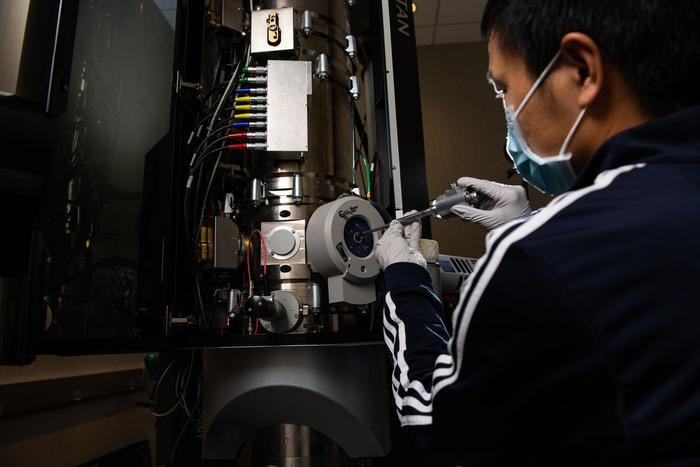
The first direct measurements of thin, supposedly insulating deposits that form in ageing rechargeable lithium-ion batteries have turned up a surprising result: the deposits are not a perfect insulator after all. According to researchers at the US Department of Energy’s Pacific Northwest National Laboratory (PNNL), the solid electrolyte interphase (SEI) layer, as it is known, is instead prone to “leaking” electrons – a finding that may help scientists develop longer-lasting batteries.
The SEI layer begins to form the very first time a rechargeable battery goes through a charging cycle. Over time, the layer gradually thickens, and its condition is thought to be related to the stability of a battery’s performance. Previously, scientists hypothesized that the SEI was electrically insulating, but its exact physical properties – including its electrical behaviour – were unknown because there was no direct way of characterizing them.
Researchers led by battery technologists Chongmin Wang and Wu Xu have now addressed this knowledge gap by embedding a nanoscale copper probe directly into a battery cell to grow a SEI film on copper or lithium. They then transferred the film to an in situ biasing transmission electron microscope and measured its electrical properties.
Leaking electrons reduce battery lifetime
The results show that as the voltage in the battery increases, the SEI layer “leaks” electrons, so reducing battery lifetime. The researchers say this hitherto unobserved semiconductor-like behaviour is mainly due to the carbon-containing components of the SEI layer. This finding suggests that minimizing these components should mean that batteries will last longer.
To back up these findings, the PNNL team’s collaborators at Texas A&M University (TAMU) created a theoretical model of an electrolyte on the surface of a lithium metal electrode. Led by Jorge Seminario and Perla Balbuena, the TAMU team members then used computational simulations to evaluate how the electrolyte evolved chemically, focusing on how chemical and physical interactions between the electrolyte and the electrode cause the SEI to form.
“Using extensive quantum physics techniques, we tested the electrolyte formulations, evaluated their chemistries and morphologies of their SEI growth, and calculated their current-voltage characteristics,” explains Seminario. “The impressive outcomes, where both the theoretical and experimental results followed the same trends, provide a way to determine the best electrolytes to use for lithium-metal batteries.”
A fruitful exchange of ideas
Balbuena adds that their results allow them to suggest possible candidate electrolytes to their experimentalist colleagues based on first principles. Conversely, they can also investigate possible alternative materials using their model before the experimental team tests them in the lab. Thanks to what Balbuena calls “the synergy of experimental chemistry with fundamental theory in the study of materials”, the team’s findings should have applications for research on batteries, sensors, biomedical devices and nano- and molecular electronics, as well as neuromorphic computing.

Emergence of crucial interphase in lithium-ion batteries is observed by researchers
Seminario and Balbuena plan to expand their ab initio studies to include all components of lithium-ion batteries, and will also extend their analyses to other chemistries so they can fully untangle the degradation effects that arise during battery cycling.
Wang and colleagues, for their part, will be looking into how the different materials in an SEI layer are spatially distributed and correlated, and how this influences the layer’s physical properties. “We will also establish a direct correlation between the properties of the SEI with the chemistry of a liquid electrolyte and aim to tailor the SEI by optimizing the composition of the electrolyte for making better batteries,” Wang tells Physics World.
The present study is detailed in Nature Energy.
